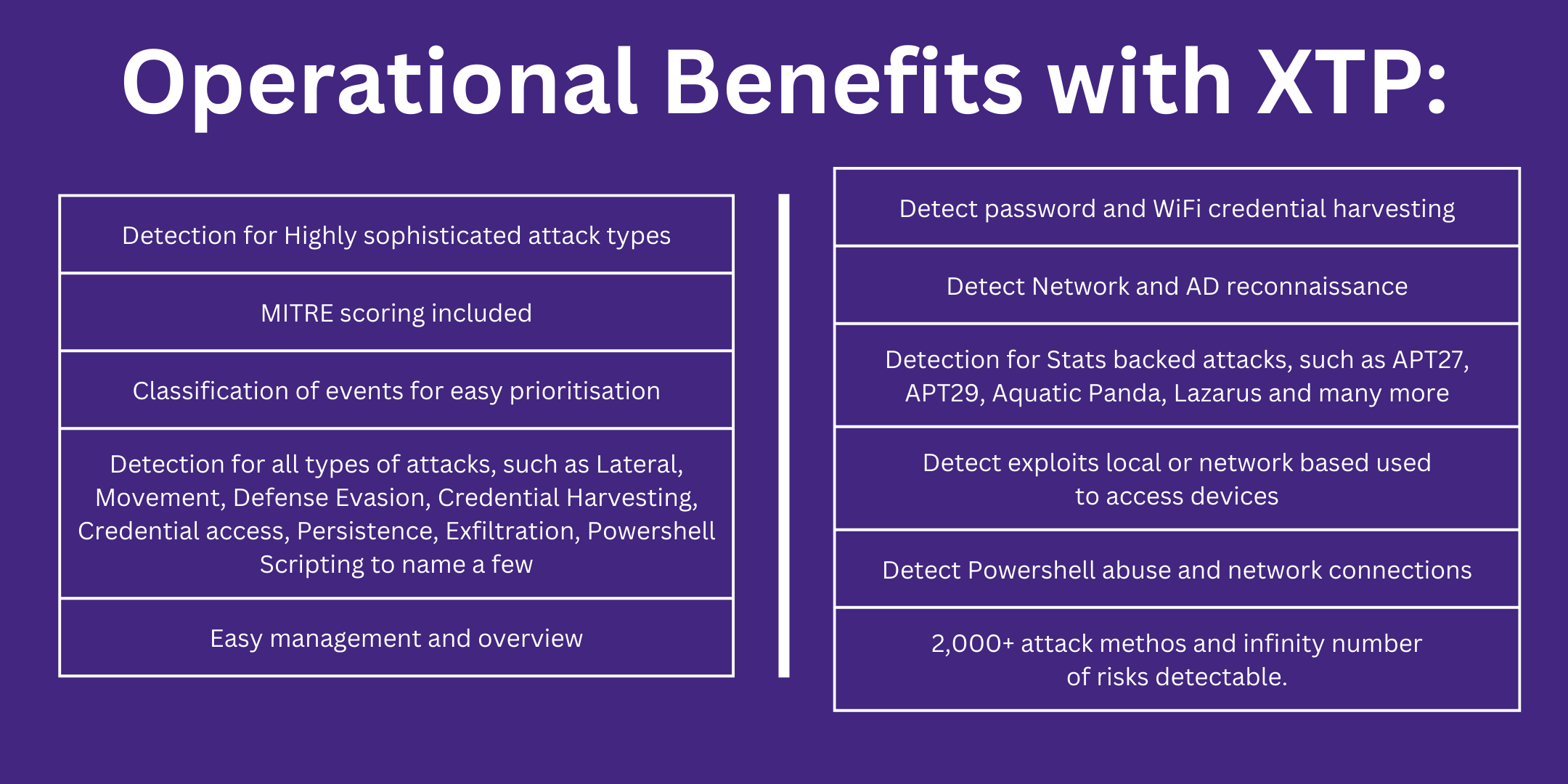MANAGED ENHANCED SECURITY
The right security layers
Having the right layers of security is crutial for any business, but understanding those layers is also very important. If you don't understand the layers, how do you know if you have the right protection in place?
Our Services:
- MANAGED ENHANCED SECURITY - EDR (PER DEVICE)
- MANAGED ENHANCED SECURITY - XDR (PER DEVICE)
- MANAGED ENHANCED SECURITY - M-XDR (PER DEVICE)

Next-Gen Anti-Virus with XTP engine:
Heimdal is a market leading anti-virus detection solutions. Anti-Virus with heurustics (behaviour-based scanning), blocking/auto scanning USB ports, real-time cloud scanning, sandboxing, zero trust execution protectionand integration with the DNS filter for automatic responses based up DNS threats.
- Four advanced malware detection layers
- Brute force protection as standard
- Full E-PDR when coupled with Threat Prevention (DNS)
- Full sophisticated attack engine (XTP) with benefits

Threat Prevention (DNS based traffic filter)
Two-way DNS filtering traffic solution using Heimdal's unique live threat intelligence feed, filtering DNS, HTTP, HTTPS layers. Records and logs all the blocks and uses machine learning to check for malicious traffic patterns. When detected they automatically alert and trigger a response from the Heimdal next-generation anti-virus module. Threat Prevention is a recommended add-on by Microsoft to enrich their products.- Network and endpoint prevention, detection and response
- Active hunting of advanced threats, infected users and processes
- AI driven neural network predictive DNS security
- Network log agent included for infection tracing
Ransomware Encryption Prevention
Aability to block all encryptions unless they are on an "allow list"
Two-way DNS filtering traffic solution using Heimdal's unique live threat intelligence feed, filtering DNS, HTTP, HTTPS layers. Records and logs all the blocks and uses machine learning to check for mailicious traffic patterns. When detected they automatically alert and trigger a response from the Heimdal next-generation anti-virus module. Threat Prevention is a recommended add-on by Microsoft to enrich their products.- Network and endpoint prevention, detection and response
- Active hunting of advanced threats, infected users and processes
- AI driven neural network predictive DNS security
- Network log agent included for infection tracing
Managed Extended Detection and Response (MXDR)
Heimdal’s MXDR service allows partners or clients to offload the management of their specific Heimdal stack to Heimdal’s Security Operations Centre (SOC). This is not solely for Heimdal’s Next Generation Antivirus but for also for the other Heimdal modules in scope. Fully backed by legally binding SLA.- 24/7/365 coverage to ensure the platform is continuously monitored by Heimdal’s accredited team
- Can set ‘rules of engagement’ allowing the client to select different levels of actions/remediations
- SOC team members actively review policies and procedures in the dashboard with you to ensure the system interacts in a manner that reflects needs
- Experts managing the platform, reducing overhead needed for internal resource to be upskilled on it
- After actions reports based upon any threats seen which are subsequently remediated (examples can be provided to show quality)
If you'd like to learn more about Managed Enhanced Security please complete the form and we'll be in contact.
Some quick comparisons agianst Sentinel One, Crowdstrike and Webroot.



What is DNS?
DNS stands for Domain Name System, and it is the phone book of the Internet. It translates human-readable domain names, such as www.bing.com, into machine-readable IP addresses, such as 204.79.197.200. This allows web browsers and other applications to find and load the correct web pages or resources on the Internet.
DNS works by following a series of steps, involving different servers and databases, to resolve a domain name into an IP address. Here is a simplified overview of how DNS works:
When you type a domain name into your web browser, your computer sends a query to a recursive DNS server, which acts like a librarian who can look up the information for you. The recursive DNS server checks its cache, or memory, to see if it already knows the IP address for the domain name. If it does, it returns the IP address to your computer. If not, it continues the search. The recursive DNS server contacts a root name server, which is like an index in a library that points to different sections. The root name server tells the recursive DNS server which top level domain (TLD) name server to contact, based on the last part of the domain name, such as .com, .org, or .edu.
The recursive DNS server contacts the TLD name server, which is like a specific rack of books in a library. The TLD name server tells the recursive DNS server which authoritative name server to contact, based on the second part of the domain name, such as bing or google. The recursive DNS server contacts the authoritative name server, which is like a dictionary on a rack of books, where a specific name can be translated into its definition. The authoritative name server returns the IP address for the domain name to the recursive DNS server. The recursive DNS server caches the IP address for the domain name, and returns it to your computer.
Your computer uses the IP address to connect to the web server that hosts the web page or resource you requested.

